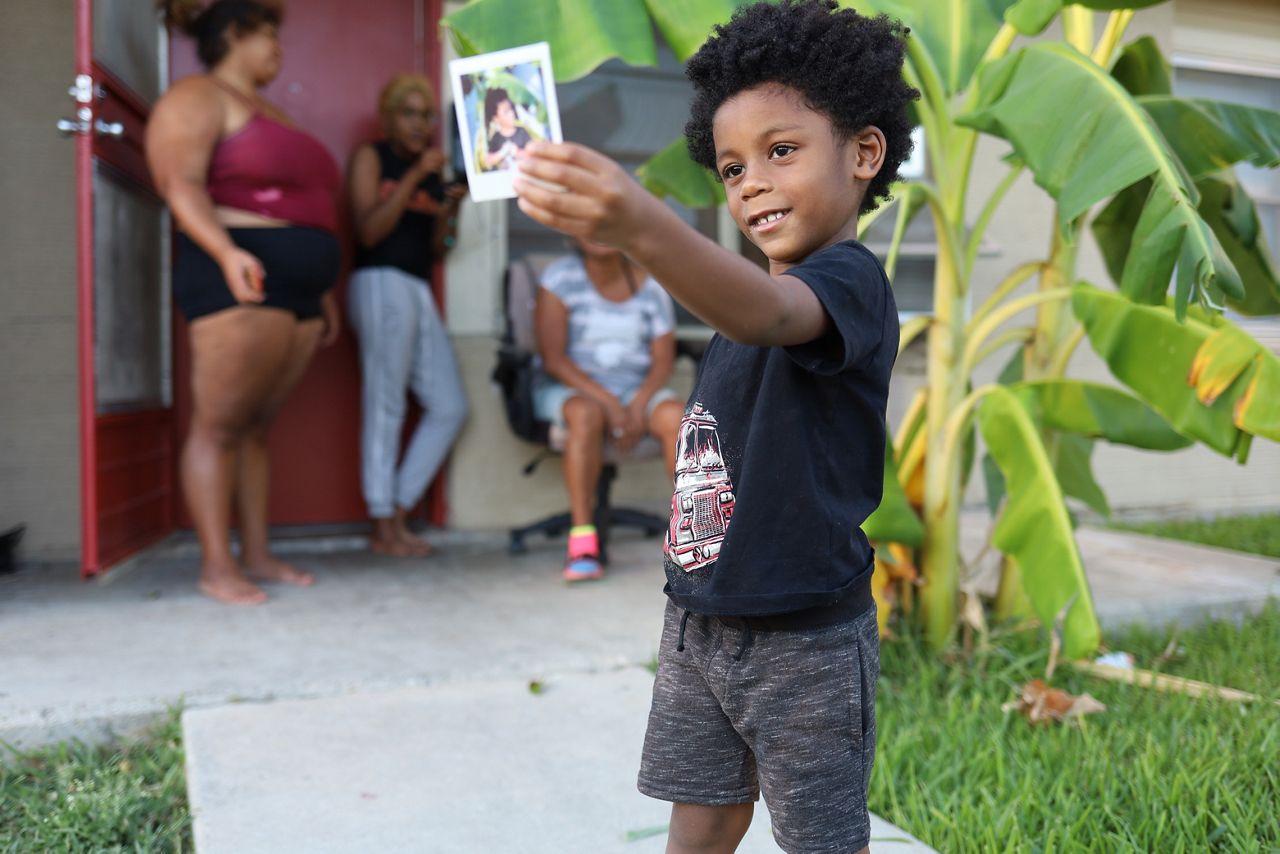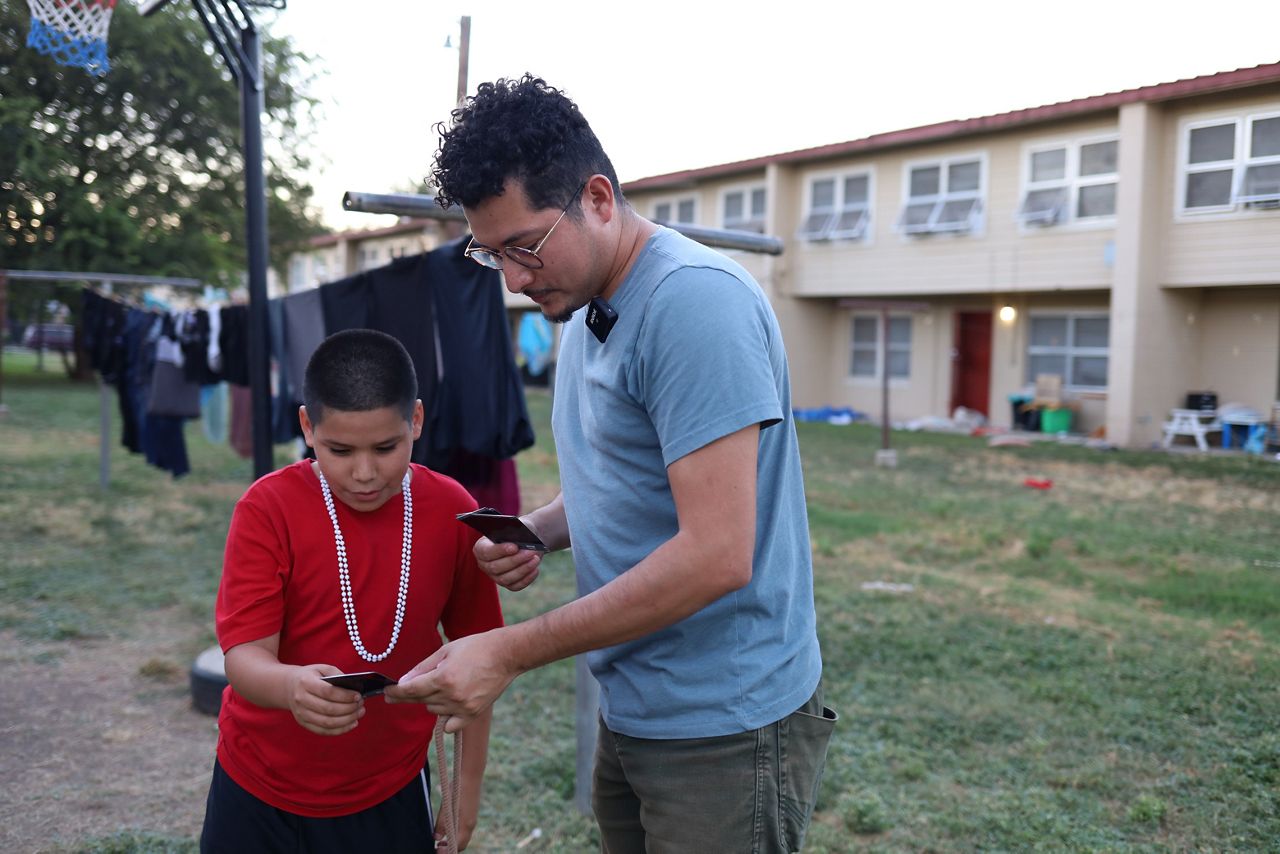SAN ANTONIO — Francisco Cortés loves to tell stories with his FUJIFILM camera, which is basically attached to him 24/7.
He recently took a walk through the Casino Homes, a housing project built in the 1950s on San Antonio’s West Side, to chat with Spectrum News 1 about his project that was on display at Jump-Start Performance Company. The housing projects are called the courts, or los courts.
“I personally have never seen a strong body of photography work on the neighborhood or really many positive stories for even that matter,” Cortés said. “It’s a neighborhood that I live six blocks away from. It’s just literally six blocks from me.”
Cortés spent two and a half months capturing the stories of families in the Cassianos - most conversations were interrupted by loud AC units, children and ice cream truck songs. He walked by a gentleman who only speaks Spanish.
His orange dress shirt was half-tucked into his jeans, his sleeves rolled up to his forearms and he wore a brace on his left wrist. Cortés explained to the gentleman in Spanish about his project, and as an incentive, he printed out his photo on this spot.
“When you watch the news on TV, it’s usually something negative on the neighborhood, isn’t it?” Cortes said. “These are real things that happen, but not everything is negative.”

Cortés says that this neighborhood, also known as Ghost Town, is usually in the news for the poverty, crime and drugs that plague it, but he noticed that these intimate conversations with the community were relatively positive. So he had some of these recorded conversations playing at his exhibit while patrons and art-lovers walked by the photos.
“A lot of these conversations were positive. Positive not in the sense that people were glossing over the realities of the neighborhood, and I try to communicate that as well like, let’s re-tell what’s happening,” Cortés said.
What’s happened in the past when there's been talk about demolishing the Cassianos, which have 494 HUD barracks-style units, is always a part of the conversation.
“This is a big place where people could thrive. Some people had real complaints about some of the structures in the buildings and how old the courts are, but at the same time, without me asking, shared their gratitude,” Cortés said.
Like Cortés said, a lot of these families know that they are living in outdated apartments, but there are more than 40,000 people on the waiting list for housing, so instead of focusing on having one AC unit or no heating in the winter, they are just grateful to have a home.
Cortés is a middle school teacher, and he spoke to some middle school-aged kids playing basketball near eight stray dogs. Coincidently, one of the kids, Abraham, is a part of what is known as Circles in Da Hood.

Missed baskets that clanked off of the rim usually bounced in by the clothes drying on the clothesline or into the group of stray dogs. The two children spoke about their experiences and played a little basketball with Spectrum News 1 afterwords.
“It’s these little these little details that help show that people in neighborhoods like this are very complex, right? We are more than one thing, there’s more to us than what somebody else tells you about them,” Cortés said.



